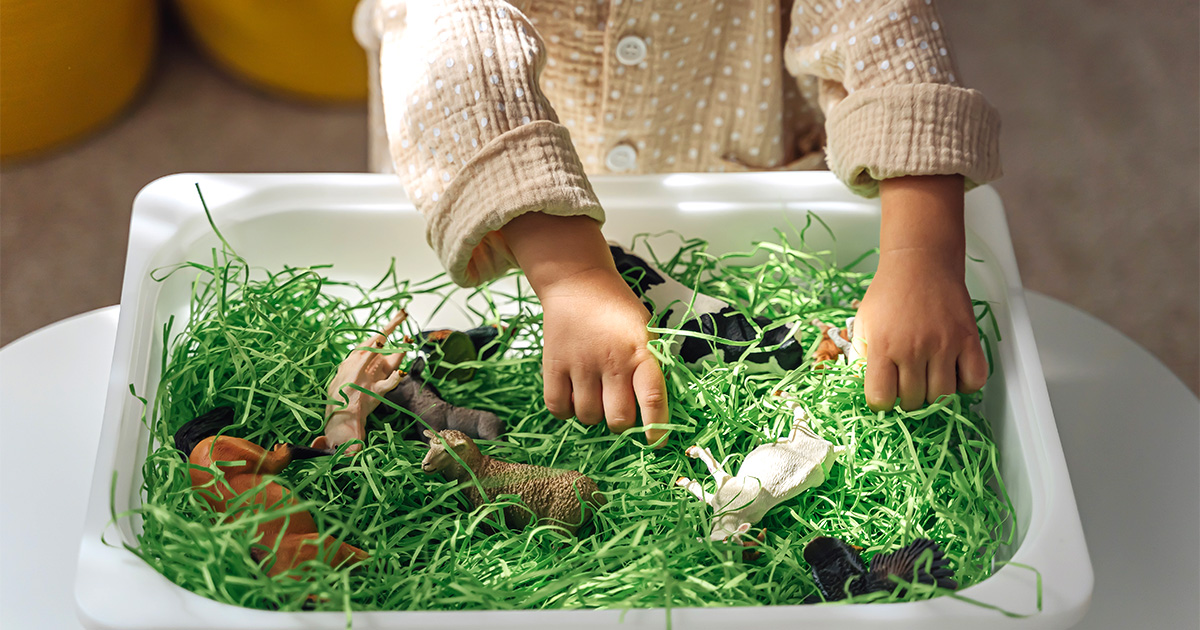- 888.258.8995
- Schedule a Tour

We live in a very busy world surrounded by many sounds and stimulations that impact our moods and daily experiences. Most adults are aware of their limits and can verbalize the need for a break. Similarly, children sometimes need to be granted the same opportunity to relax and retreat for some quiet time after a busy day.
Encourage Self-Regulation
Offering time, a quiet space, and appropriate materials for children to engage with will give them a chance to reflect and learn through their senses. This space holds the potential to support children’s development too, as they embrace independent play and curiosity.
Sensory-based play can also foster opportunities for developing math, language, fine motor skills, and life skills including self-regulation. Encouraging time spent in a quiet space helps children process their feelings and ideas as well as consider the importance of other perspectives.
Make a Calm Space at Home
Find an area in your home that is away from the hustle and bustle of daily life. Include soft items, such as a rug to define the area with pillows and furniture that is the appropriate scale for children to use. Provide materials that encourage quiet interaction:
- Consider books, writing and drawing materials, and other sensory toys that invite children to use the defined area with intention.
- Create a sensory tube. Upcycle a clean, clear plastic bottle by filling it with natural materials, soft pop-poms, and feathers, along with water, oil, and food coloring. Be sure to seal the bottle with glue and select items that are not a choking hazard.
- Create a sensory bin. Encourage children to safely explore and manipulate materials such as fidgets, sensory balls, playdough, or silly putty.
Engage in Quiet Outdoor Play
Take a simple walk around your neighborhood or spend time in the backyard. Offer time to explore textures found in nature through touch, color, and shape. Observe your surroundings together. Listen for natural sounds and respond to different scents in the environment.
- Offer additional sensory garden experiences by investigating different flowers, vegetables, sand, and soil. Let your child play in the dirt without worrying about the mess.
- Encourage water play. Most kids love to play in the water with different containers, toys, or plastic animals. Let them pour, splash, make waves, and embrace the sensory experience.
Incorporating quiet time during the day and encouraging children to use the quiet space as needed will support their emotional well-being and learning at home. Prioritize these calm and creative moments and model the experiences too. If children see adults in the home participating in quiet activities such as reading, writing, drawing, or painting, they will find motivation to do it as well.
Providing these opportunities will allow children to develop the essential skills needed for social-emotional regulation and will help set them up for success in school and life.
